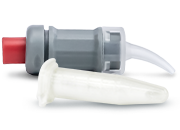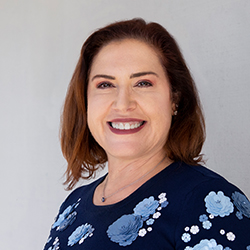
Dr. Victoria Sullivan
Dr. Victoria Sullivan is a pediatric dentist who trained at the University of Pacific . She went on to earn her certificate in pediatric dentistry at USC and furthered her education with a master’s degree at the University of Rutgers. She has also been an adjunct at the University of Houston in San Antonio, Texas.
Dr. Sullivan was one of the first practitioners in the world to work with pediatric zirconia crowns. Dr. Fisher, a co-founder of Sprig, was her anesthesiologist. She notes he was very artistic. He would draw teeth and started asking her pointed questions about what the deciding factor was in choosing [VH3] stainless steel crowns for pediatric patients. Later, he brought her a box of white crowns and challenged her to see if she could break one. He told Dr. Sullivan that it was bioinert and had strong possibilities for patients. She also saw it as an amazing opportunity to offer patients a more esthetic crown since she knew how much parents requested all-white crowns. Now the next step was to learn how to place them.
During beta testing for EZCrowns, there were no specific sizes just general shapes. She mentions that she had no clue how best to prep and she noticed that she felt comfortable placing them with Dr. Fisher but once he wasn’t in the room, the box went back on the shelf. Two years later, and after placing 100-150 EZCrowns, she went to Sprig’s very first prepping course. At the time it was called EZPEDO University, now Sprig University. She said taking the course changed everything. She was able to reduce her time from 10-15 minutes to 2-3 minutes start to finish.
Hands-On Experience
It’s important to note that the residency program you select embraces new technology and theories about how to treat both biofilm and caries disease. Dr. Sullivan believes it’s critical for residency programs to teach how to place zirconia crowns and offer as many different types as possible. Otherwise residents must find that information on their own.
A great way to get hands-on experience with zirconia crowns is to go to a supported program for residents. Dr. Sullivan believes that when you can get specific hands-on training it’s worth its weight in gold.
But What if You Can’t Attend a Course on Zirconia Crowns?
Dr. Sullivan recommends choosing a zirconia company and call them to ask if they have a dentist in your area who’s regularly using their product. Call that practitioner and ask if you can shadow them.
What to Look for in Dental Residency Curriculum
There are two different types of schools. University based and hospital-based programs. Dr. Sullivan thinks a hospital-based program provides enormous practical experience, especially with special needs and complex procedures. She went to a blended program which gave her the best of both worlds and the worst of both worlds. It’s important to ask in an interview what the collaboration is between the program and outside programs and what types of activities you’re going to get in the program. The more activities and collaboration with outside programs, the better.
Note that different states have different rules for medications given to children. Some programs allow limited use of medications with oral sedation or no experience with IV sedation. Consider what kind of practice you want to work for. Host Dr. Johnson recommends working hard during the general anesthesia rotation; being able to manage a child’s airway is critical when providing in office sedation.
Remember that endodontics and pedodontics have a lot of emergencies. Children have accidents all the time so be prepared to do emergency cases. In fact, doing emergency cases in residency provides a wealth of experience and knowledge. Always volunteer to do these cases, even if it’s at 4:30 in the afternoon.
When choosing a dental residency program, first figure out where you want to practice. Do you want to practice in Manhattan or in rural Montana? Those two locations will have vastly different needs and your knowledge should match what area you want to work in. Next, figure out what appeals to you in practice and choose a program that caters to those interest. It helps if those interest align with your instructors’.


